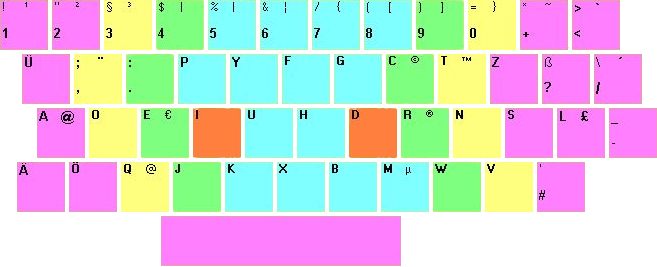This post describes how to set up the Dvorak keyboard layout on Windows, Mac OS, and Linux.
Update: Now also available as a portable version for Windows (admin permissions not required).
Basically, the standard qwerty/qwertz keyboard layout is bad. That’s why the Dvorak layout was developed. The only problem is that not all good things make it and become a standard.
Let’s take a look at a typical German Dvorak layout:

This is a mixture of Dvorak German type 1 and typo 2 layouts, with minor other changes.
Read on for instructions how to set it up on your Windows, Mac OS X, or Linux computer.
